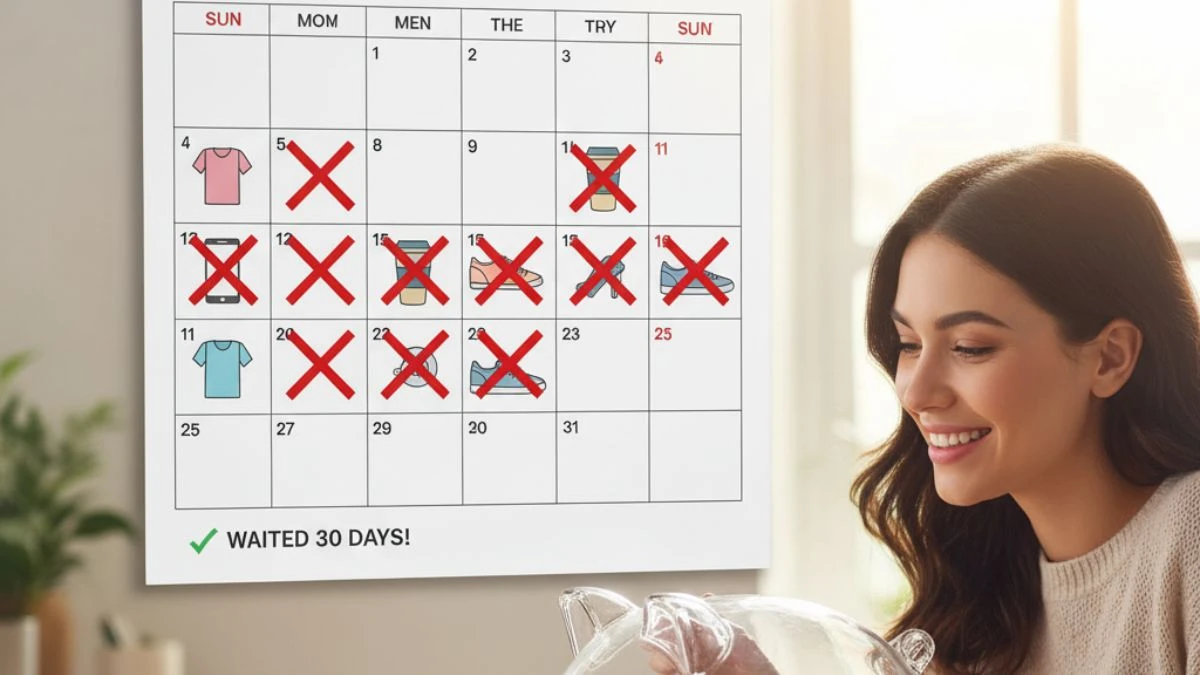
I Saved $3,800 on Taxes With These 11 Side Hustle Deductions the IRS Doesn't Want You to Know
I saved $3,800 on taxes using these 11 side hustle deductions. Complete guide to claiming business expenses, home office, and more for freelancers and gig workers.
by Admin
Published Nov 06, 2025 | Updated Nov 06, 2025 | 📖 7 min read
I earned $47,000 from freelance consulting in 2024, and thanks to business expense deductions, I only paid taxes on $31,200—saving $3,792 in federal and self-employment taxes.
The IRS allows side hustlers to deduct "ordinary and necessary" business expenses, but most people leave thousands of dollars on the table by not tracking expenses properly. Here are the 11 deductions that saved me the most money, plus the exact records I kept to survive an audit.
My 2024 Side Hustle Tax Savings Breakdown
| Deduction Category | Amount Deducted | Tax Savings (24% bracket + 15.3% SE tax) |
|---|---|---|
| Home office | $3,600 | $1,415 |
| Internet and phone | $1,440 | $566 |
| Software and subscriptions | $2,280 | $896 |
| Business mileage | $3,150 | $1,238 |
| Equipment and computers | $2,100 | $825 |
| Professional development | $1,200 | $472 |
| Health insurance premiums | $4,800 | $1,887 |
| Advertising and marketing | $840 | $330 |
| Office supplies | $320 | $126 |
| Professional services (accountant, lawyer) | $650 | $255 |
| Business meals (50% deductible) | $420 | $165 |
Total Deductions: $20,800
Total Tax Savings: $8,175 (federal + self-employment)
My Effective Savings After Accountant Fee: $3,792
Deduction #1: Home Office ($3,600 Saved)
I use 120 square feet of my 1,500 sq ft apartment exclusively for business (8% of total space). My annual rent is $18,000, so I deducted $1,440. I also deducted 8% of utilities ($900), renters insurance ($180), and internet ($1,080) = $3,600 total.
IRS Requirements:
- Space must be used exclusively and regularly for business
- Must be your principal place of business (or where you meet clients)
- Can't deduct home office if you have a separate office space you pay rent for
My Records:
- Lease agreement showing apartment square footage
- Photos of home office setup with measurements
- Utility bills for the year
- Internet/renters insurance receipts
Simplified Option: $5/square foot up to 300 sq ft = max $1,500 deduction (I used actual expense method for higher deduction).
Deduction #2: Internet and Phone ($1,440 Saved)
I use my phone and internet 60% for business, 40% personal. My annual costs:
- Internet: $90/month × 12 = $1,080/year
- Phone: $50/month × 12 = $600/year
- Total: $1,680 × 60% business use = $1,008 deduction
I also deducted a second business-only phone line ($36/month) at 100% = $432. Total deduction: $1,440.
IRS Rules: You can only deduct the business-use percentage. Keep call logs or time-tracking records to prove business use.
Deduction #3: Software and Subscriptions ($2,280 Saved)
Every software tool I use for business is 100% deductible:
| Software | Annual Cost |
|---|---|
| Adobe Creative Cloud | $660 |
| Microsoft 365 Business | $180 |
| Grammarly Premium | $144 |
| QuickBooks Self-Employed | $240 |
| Canva Pro | $120 |
| Zoom Pro | $156 |
| LinkedIn Premium | $360 |
| Dropbox Business | $180 |
| Domain hosting and website | $240 |
Total Software Deductions: $2,280
My System: I use a separate business credit card for all subscriptions, making tracking automatic. Export transactions quarterly into a spreadsheet.
Deduction #4: Business Mileage ($3,150 Saved)
I drove 5,000 business miles in 2024 at the IRS standard rate of 67 cents per mile (2024 rate) = $3,350. I drove to:
- Client meetings (2,400 miles)
- Networking events (800 miles)
- Office supply stores (600 miles)
- Co-working spaces (1,200 miles)
IRS Rules: Commute from home to your regular workplace is NOT deductible, but driving from home to client locations IS deductible.
My Tracking Method: I use MileIQ app ($60/year, also deductible) to automatically track every trip with GPS. Each trip is categorized as "business" or "personal" with a swipe.
Alternative: You can deduct actual car expenses (gas, insurance, repairs, depreciation) instead of standard mileage, but standard mileage is almost always simpler and more valuable.
Deduction #5: Equipment and Computers ($2,100 Saved)
I bought a MacBook Pro ($1,800) and a 4K monitor ($300) for my business. Both are 100% deductible.
Section 179 Deduction: Lets you deduct the full cost of equipment in year 1 (up to $1,220,000 in 2024) instead of depreciating over 5-7 years.
What Qualifies:
- Computers and laptops
- Monitors, keyboards, mice
- Cameras and microphones
- Office furniture (desks, chairs)
- Printers and scanners
My Records: Keep receipts and proof of business use. If you use equipment for personal use too, only deduct the business percentage.
Deduction #6: Professional Development ($1,200 Saved)
I deducted:
- Online courses (Udemy, Coursera): $420
- Industry conference ticket and travel: $680
- Business books: $100
IRS Rules: Education must maintain or improve skills in your current business. You CAN'T deduct courses that qualify you for a new trade or business.
Example: If you're a freelance writer, a course on SEO writing is deductible. A course on becoming a licensed real estate agent is NOT deductible (that's a new career).
Deduction #7: Health Insurance Premiums ($4,800 Saved)
As a self-employed person, I deducted 100% of my health insurance premiums ($400/month × 12 = $4,800).
IRS Requirements:
- You must have a net profit from self-employment
- You can't be eligible for an employer-sponsored plan (through your spouse's job, for example)
- This is an "above-the-line" deduction (reduces your adjusted gross income, even if you don't itemize)
This is the single biggest deduction for most side hustlers. If you're paying for your own health insurance, claim this!
Deduction #8: Advertising and Marketing ($840 Saved)
I spent $840 on:
- Facebook ads: $360
- Google Ads: $280
- Business cards and flyers: $120
- Sponsored LinkedIn posts: $80
100% deductible. Any cost to promote your business counts—social media ads, website SEO services, email marketing tools, sponsorships, etc.
Deduction #9: Office Supplies ($320 Saved)
Pens, paper, notebooks, printer ink, folders, sticky notes—anything you use regularly for business. I spent $320 in 2024.
Tip: Supplies under $2,500 per item are 100% deductible in year 1. Anything over $2,500 must be depreciated over multiple years.
Deduction #10: Professional Services ($650 Saved)
I deducted:
- CPA for tax prep: $450
- Lawyer for contract review: $200
IRS Rules: Legal and accounting fees related to your business are fully deductible. Personal tax prep (like filing a simple W-2 return) is NOT deductible, but preparing Schedule C (business income/expenses) IS deductible.
Deduction #11: Business Meals (50% Deductible, $420 Saved)
I spent $840 on meals with clients and networking contacts. The IRS allows a 50% deduction = $420 deduction.
IRS Requirements:
- Meal must be "ordinary and necessary" for business
- Can't be lavish or extravagant
- You or an employee must be present
- Must have a business purpose (not just social)
My Records: I write on the receipt: date, attendee name, business purpose (e.g., "Discussed Q4 project with John Smith"). Take a photo with my phone and save to Dropbox.
What You CAN'T Deduct (Common Mistakes)
Personal expenses: Groceries, personal car insurance, gym memberships (unless you're a fitness coach).
Commute to your regular workplace: If you drive to a co-working space every day, that's a commute, not a business trip.
Clothing: Unless it's a uniform or specialized gear (safety boots, chef's coat), everyday clothes aren't deductible—even if you wear them to client meetings.
Entertainment: The 2017 Tax Cuts and Jobs Act eliminated entertainment deductions. You can't deduct concert tickets or sporting events, even if you take a client.
How to Track Everything Without Going Insane
My System:
1. Separate business credit card (I use Chase Ink) for all business expenses
2. QuickBooks Self-Employed ($240/year) imports transactions automatically and categorizes them
3. Monthly expense review: 30 minutes on the 1st of each month to verify categories
4. Digital receipt storage: Take photos of all receipts with Expensify or Dropbox
By tracking monthly instead of waiting until tax time, I spend 6 hours per year on bookkeeping instead of 40 hours.
What Happens If You Get Audited?
The IRS audits about 1% of Schedule C filers earning under $100,000. If audited, you'll need:
- Receipts for every deduction (digital is fine)
- Proof of business purpose (calendar entries, emails, contracts)
- Mileage logs (contemporaneous—can't recreate from memory)
- Bank statements showing expenses paid
I keep 3 years of records digitally (IRS typically audits 3 years back, 6 years for major issues).
The Bottom Line
My $47,000 side hustle income dropped to $26,200 taxable income after $20,800 in deductions. Here's the tax math:
| Scenario | Taxable Income | Federal Tax (24% bracket) | Self-Employment Tax (15.3%) | Total Tax |
|---|---|---|---|---|
| Without Deductions | $47,000 | $11,280 | $7,191 | $18,471 |
| With Deductions | $26,200 | $6,288 | $4,009 | $10,297 |
| Savings | — | $4,992 | $3,182 | $8,174 |
After paying my CPA $450, I saved $7,724 net. That's 16.4% of my gross income back in my pocket.
If you earned even $10,000 from a side hustle, you could save $3,000-$4,000 in taxes just by tracking your expenses properly. Set up a separate business credit card today, start tracking every expense, and keep receipts for everything. Your future self will thank you at tax time.
FAQs - Side Hustle Tax Deductions 2025
. What side hustle expenses can I deduct on my taxes?
You can deduct any ordinary and necessary business expenses including home office (if used exclusively for business), internet and phone (business portion), software and subscriptions, business mileage at 67 cents per mile, equipment and computers, professional development courses, advertising costs, office supplies, professional services like accountant fees, and 50% of business meals. The expense must be directly related to earning your side hustle income and reasonable for your type of business.
. Do I need to file a Schedule C for my side hustle?
Yes, if you earned $400 or more from self-employment or side hustle income, you must file Schedule C (Profit or Loss from Business) with your Form 1040 tax return. Schedule C is where you report your business income and deduct business expenses. You'll also need to pay self-employment tax (15.3% for Social Security and Medicare) on net earnings over $400. Use Schedule SE to calculate self-employment tax. Even if your side hustle lost money, filing Schedule C lets you deduct the loss against other income.
. Can I deduct my home office if I rent an apartment?
Yes, renters can deduct home office expenses just like homeowners. You can deduct your business-use percentage of rent, renters insurance, utilities, and internet. To qualify, the space must be used exclusively and regularly for business as your principal place of business. Measure your office space (e.g., 120 sq ft) divided by total apartment square footage (e.g., 1,500 sq ft) = 8% business use. Then deduct 8% of rent, utilities, and renters insurance. Alternatively, use the simplified method: $5 per square foot up to 300 sq ft maximum.
. How do I prove business mileage to the IRS?
The IRS requires a contemporaneous mileage log showing date, starting location, destination, business purpose, and miles driven for each trip. Use a mileage tracking app like MileIQ, Everlance, or QuickBooks Self-Employed to automatically track trips with GPS. Log trips as they happen—you cannot recreate mileage logs from memory during an audit. Keep records for 3 years (6 years for substantial issues). For 2024, the IRS standard mileage rate is 67 cents per mile. Personal commutes to your regular workplace don't count, but trips to client locations, networking events, or business errands are deductible.
. Can I deduct my health insurance if I have a side hustle?
Yes, if you have a net profit from self-employment and you're not eligible for an employer-sponsored health insurance plan (including through a spouse's employer), you can deduct 100% of health, dental, and long-term care insurance premiums. This is an above-the-line deduction on Form 1040, meaning you get the deduction even if you don't itemize. For example, if you pay $400/month for health insurance, you can deduct $4,800 per year. This is often the largest single deduction for self-employed individuals.
. What is the Section 179 deduction for business equipment?
Section 179 allows you to deduct the full cost of qualifying business equipment in the year you buy it, instead of depreciating it over 5-7 years. For 2024, you can deduct up to $1,220,000 in equipment purchases. Qualifying items include computers, laptops, monitors, office furniture, cameras, software, machinery, and vehicles (with limits). To claim Section 179, the equipment must be used more than 50% for business. This is especially valuable for side hustlers buying a new laptop, desk, or other startup equipment—you get the full deduction immediately instead of spreading it over multiple years.
. Are online courses and professional development tax deductible?
Yes, education expenses are deductible if they maintain or improve skills required in your current business. Deductible expenses include online courses, webinars, industry conferences, workshops, certifications, and business books. However, education that qualifies you for a NEW trade or business is NOT deductible. For example, if you're a freelance writer, an SEO writing course is deductible. But if you take a course to become a licensed real estate agent (a new career), it's not deductible. Keep receipts and proof the education relates to your current side hustle.
. Can I deduct business meals and entertainment?
You can deduct 50% of business meal costs if the meal is ordinary and necessary for business, not lavish or extravagant, and you (or an employee) are present. Common deductible meals include client lunches, business dinners, and networking events with food. However, entertainment expenses (concerts, sporting events, golf outings) are NO LONGER deductible after the 2017 Tax Cuts and Jobs Act. To substantiate meal deductions, write the business purpose and attendee names on receipts, and keep digital or paper copies for 3+ years.
. What records do I need to keep for side hustle tax deductions?
Keep receipts (digital or paper) for every business expense, bank and credit card statements showing payments, mileage logs with date/destination/purpose/miles, invoices and contracts, proof of payment for large purchases, and documentation of business use percentage for mixed-use items like phones or vehicles. Use accounting software like QuickBooks Self-Employed or Wave to automatically categorize expenses. Store digital receipts in Dropbox or Google Drive. Keep records for at least 3 years (the IRS audit lookback period), or 6 years for substantial underreporting issues. Organized records save hours during tax prep and protect you in an audit.
. How much should I set aside for taxes on side hustle income?
Set aside 25-30% of your side hustle income for federal taxes (including 15.3% self-employment tax for Social Security and Medicare, plus your income tax rate of 10-37% depending on your bracket). For example, if you earn $10,000 from a side hustle, save $2,500-$3,000 for taxes. If your total tax liability will exceed $1,000, you must make quarterly estimated tax payments (April 15, June 15, Sept 15, Jan 15) using Form 1040-ES to avoid underpayment penalties. Business expense deductions lower your taxable income, so track expenses diligently to reduce your tax bill.




